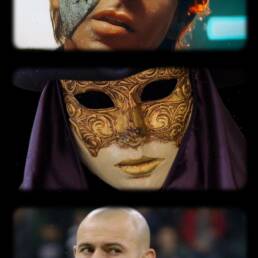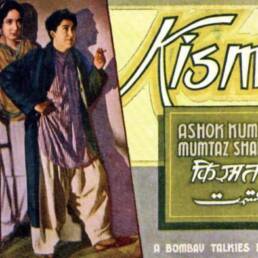A student protest in an African country in 1966-67 eventually gave the Bombay film industry one of its iconic cult hits and re-invigorated the career of an actor down South propelling him to superstardom.
In late 1966, the govt. of Tanzania passed a new, mandatory National Service requirement for graduating students. It led to mass protests in the University College of Dar es Salaam as students took to the streets refusing to accept the new legislation.
The Barot family patriarch had immigrated to Dar es Salaam in 1930. By the late 1960s, two of his sons had moved to England. In the disturbed times, the family wished their youngest son to follow suit. But Chandra, as he was called, had other plans.
He traveled to Bombay to meet his sister Kamal Barot who was a singer in Hindi films. This trip completely changed young Chandra’s life. He fell in love with the silver screen and in 1970, bagged his 1st film project as an assistant to Manoj Kumar in Purab Aur Pachhim.
He would soon become a protégé of sorts to Kumar, assisting the latter on both Shor and Roti Kapda aur Makaan (RK&M). During the shoot of RK&M, something came to Chandra Barot’s attention.
Nariman Irani was a well known cinematographer who was working on the film. In 1972, he produced Zindagi Zindagi, a film starring Sunil Dutt and Nutan. The film had bombed miserably leaving Irani in severe debt.
Struggling to pay off his creditors, Irani narrated his sad tale to Manoj Kumar. Kumar suggested that he try producing another film to pay off his debts with the collections of that one.
Chandra Barot was roped in to direct it while Amitabh Bachchan and Zeenat Aman, cast members of RK&M. agreed to star in the film to help out Irani. Pran also decided to join them.
Salim & Javed were approached for a story. They handed over a script which had been rejected by practically the entire industry. The shoot began on a tight budget. Six months before the planned release, disaster struck.
Producer Irani was killed in an on-set accident when a wall crashed on him. Barot somehow managed to complete the film. It was titled DON. On 12 May 1978, the film finally released. As the budget was exhausted, there was no promotion.
Worse, it released only two weeks after Yashraj Films’ TRISHUL – a multi-starrer involving Bachchan as well – that was already dominating the box office. Panned by critics and with no marketing, DON was declared a flop.
But then something changed. When Barot had shown his mentor Manoj Kumar the film, Kumar felt the 2nd half was too taut and suggested inclusion of a song allowing people to catch a bathroom break. Thus was born the Kishore Kumar number “Khaike paan Banaras-wala”
The song started becoming very popular, enjoying tremendous positive word of mouth – going “viral” to borrow today’s lingo. People started thronging the theatres to catch simply the song. Don went on to become the 3rd biggest commercial success of 1978.
Only when the film was a certified blockbuster, Bachchan, Aman, Pran and the others involved took their remuneration. A chunk of the proceeds were handed over to Nariman Irani’s widow to settle the debt.
Over the years, DON spawned multiple remakes in several languages including versions starring NTR (Telugu), Mohanlal (Malayalam), a Pakistani version titled COBRA as well Shah Rukh Khan’s version of the same name released in 2006.
But probably the most intriguing of the remakes was the Tamil version BILLA. Shivaji Rao Gaekwad, a Marathi from Bangalore, had made his debut in Tamil cinema in 1975 with the screen name Rajinikanth.
Despite early success, first in negative roles and then in more traditional lead roles, Rajinikanth, stressed from the constant limelight, contemplated quitting films in the late 70s. He was talked out of it by producer K. Balaje & his son Suresh who were remaking Don as Billa and cast Rajini as the lead.
Although Billa was faithful remake of Don, Rajini, instead of copying Bachchan’s style, infused the role with his own mannerisms. Released on Republic Day of 1980 it went on to become Rajinikanth’s biggest commercial success at that point. The rest is history.
Sources:
https://www.rediff.com/movies/2006/oct/16sld3.htm
https://www.youtube.com/watch?v=JM9euQtg4-4
https://web.archive.org/web/20070617192827/http://www.expressindia.com/fullstory.php?newsid=88218




